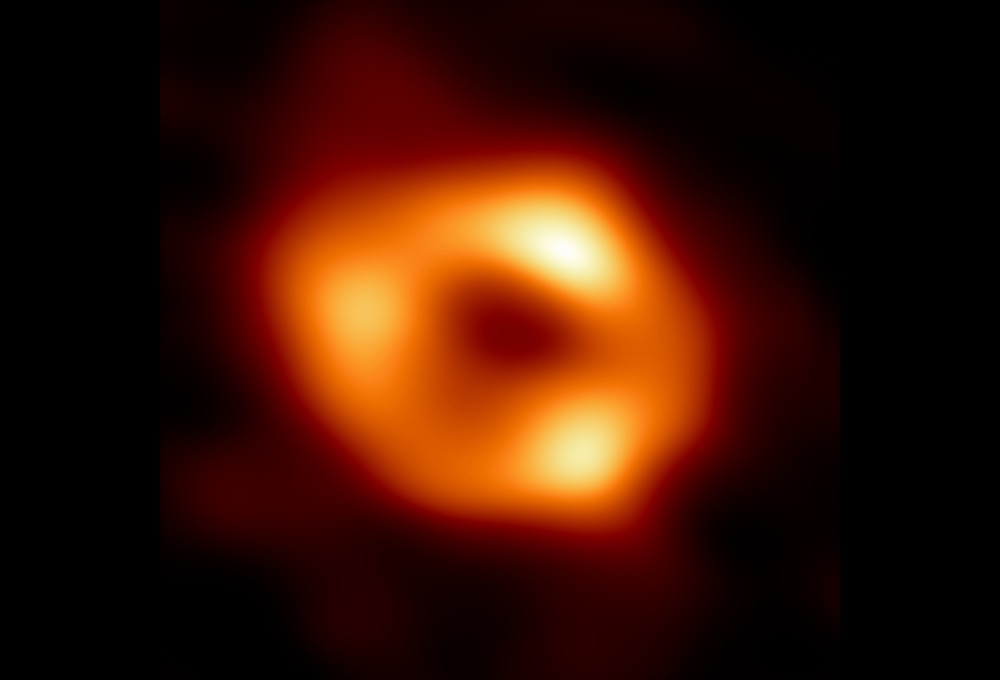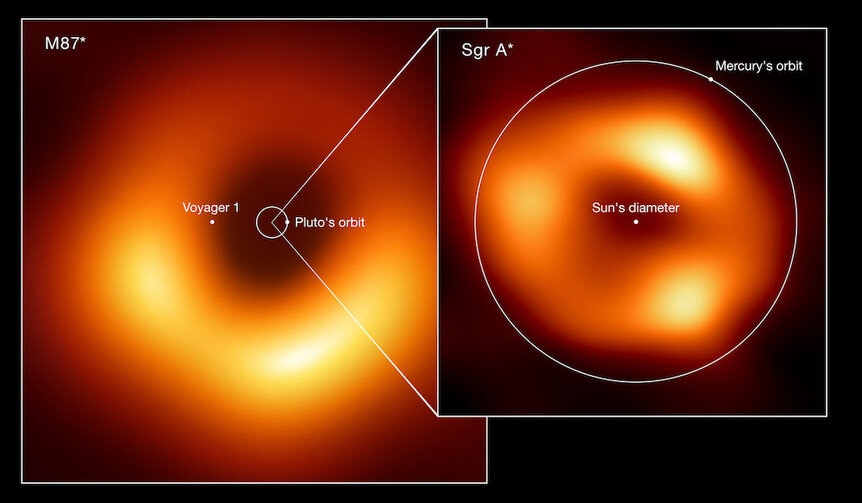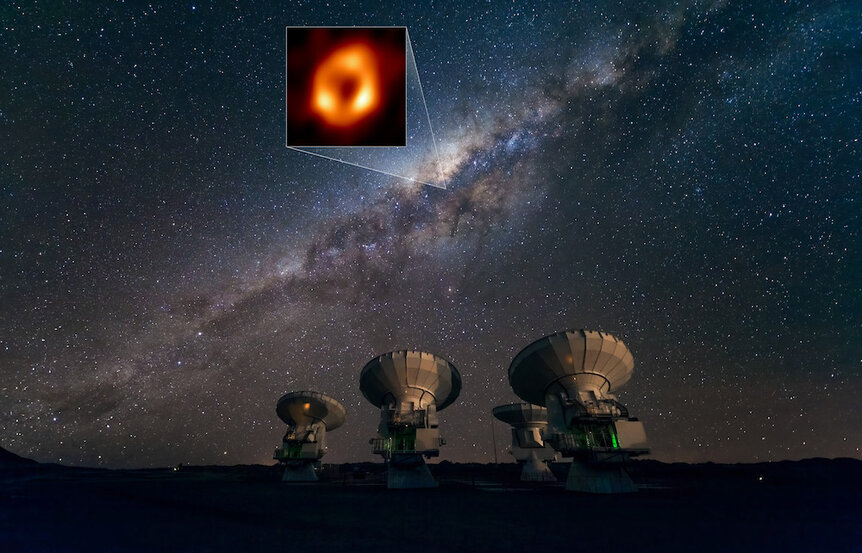Create a free profile to get unlimited access to exclusive videos, sweepstakes, and more!
Incredible images as astronomers see material swirling around the Milky Way’s supermassive black hole for the very first time!
Images show material just above The Point Of No Return.

Astronomers have, for the very first time, taken extreme close-up observations of the supermassive black hole in the center of our Milky Way galaxy.
This black hole, called Sgr A* (“Sagittarius A-star”), has over 4 million times the mass of the Sun and is about 25 million kilometers wide. It’s located about 26,000 light years from us, so its apparent size is about 5 billionths of a degree: About the size of a US quarter would appear from Earth if it were on the Moon.
The black hole is, of course, black, so it cannot be seen. But the Universe has thrown us a bone: Material falling into a black hole falls into a flat disk called an accretion disk, well outside the black hole itself. That material gets extremely hot and emits light we can see, and it is this light that can be detected.
Here is the amazing image:
What you are seeing is material orbiting Sgr A* less than 60 million kilometers from the black hole! The dark hole in the center isn’t the black hole itself, it’s what we poetically call the shadow of the black hole: Close in, but still above the Point Of No Return, photons of light can actually orbit the black hole before eventually falling in, so we see no light from that region.
This fantastic achievement was possible by linking up eight telescopes across our planet, giving them the same keen eyesight as a single telescope the size of the Earth. They observe in very long wavelengths of light, roughly the same your microwave uses to cook food, and extremely careful measurements allowed astronomers to combine their observations and peer into the dark heart of our galaxy.
This project is called the Event Horizon Telescope, or EHT, referring to the point in space near a black hole where, no matter what you do, you’re falling in. We sometimes call this the size of the black hole. The EHT doesn’t actually see the event horizon because, well, there’s nothing to see there. Not even light can escape from the event horizon, so it’s literally black.
If the image looks familiar it’s because it has a striking resemblance to the first EHT image of the supermassive black hole in the center of the huge galaxy M87. That black hole is far larger than ours, about 1,500 times the mass and size of Sgr A*, and is about 2,000 times farther away. It appears larger than ours does in the sky.
They’re very different. The M87 black hole is so much larger that it takes material days and weeks to orbit it once, but material around Sgr A* orbits in minutes. That makes imaging our local black hole much harder, because the images have to be taken much more rapidly to avoid smearing the details out. In fact many, many images were combined to create the Sgr A* image, which shows an average of the images.
The material around the black hole has a powerful magnetic field embedded in it, and along with the intense gravity this sculpts much of the behavior of the extremely hot gas. The bright spots may be where the magnetic field is a bit stronger, squeezing the material a little harder and making it glow stronger; however given all the uncertainties in the imaging process it’s unclear if these glowing spots really do represent much brighter spots or not.
Images like this are extremely important to astronomers. In the 1980s it started to become clear that all big galaxies had supermassive black holes in their centers, and it was decades later than technology got good enough to see stars around our Milky Way’s black hole moving as the incredible gravity kept them in thrall — it was those observations that told us the black hole has four million solar masses. Even then those stars were tens of billions of kilometers from the black hole at least, and seeing something on the scale of a few tens of millions of kilometers was impossible until the past few years.
These images tell us about the immediate environment around the black hole, where Einstein’s theory of gravity and relativity reign supreme. We have predictions on how this material must behave, and the images show us those predictions are largely correct. That’s a very big deal indeed. Black holes are mysterious, and just plain weird, but we do in fact have a pretty good grip on how they behave.
Just being able to get these images is amazing, too. Connecting telescopes around the world is an immense technical challenge, not to mention how hard it is to peer through all the material in the galactic center to see the black hole, and actually spot the hot gas in Sgr A*’s accretion disk. It’s difficult to understate just how huge a breakthrough this is.
And at the most basic level these images show us viscerally that black holes are in fact real. An object with millions of times the mass of the Sun yet completely, utterly dark, a hole in a ring of tenuous material millions of degrees hot but flowing around something we cannot see; only its effects on objects around it can be detected.
The Universe is a marvelous, wondrous, awesome place, and what these images say to me is that we can understand it. When we join together across nations, across our planet, and let our curiosity guide us, we can peer right into the most bizarre places the cosmos can show us, and we can know them.





























